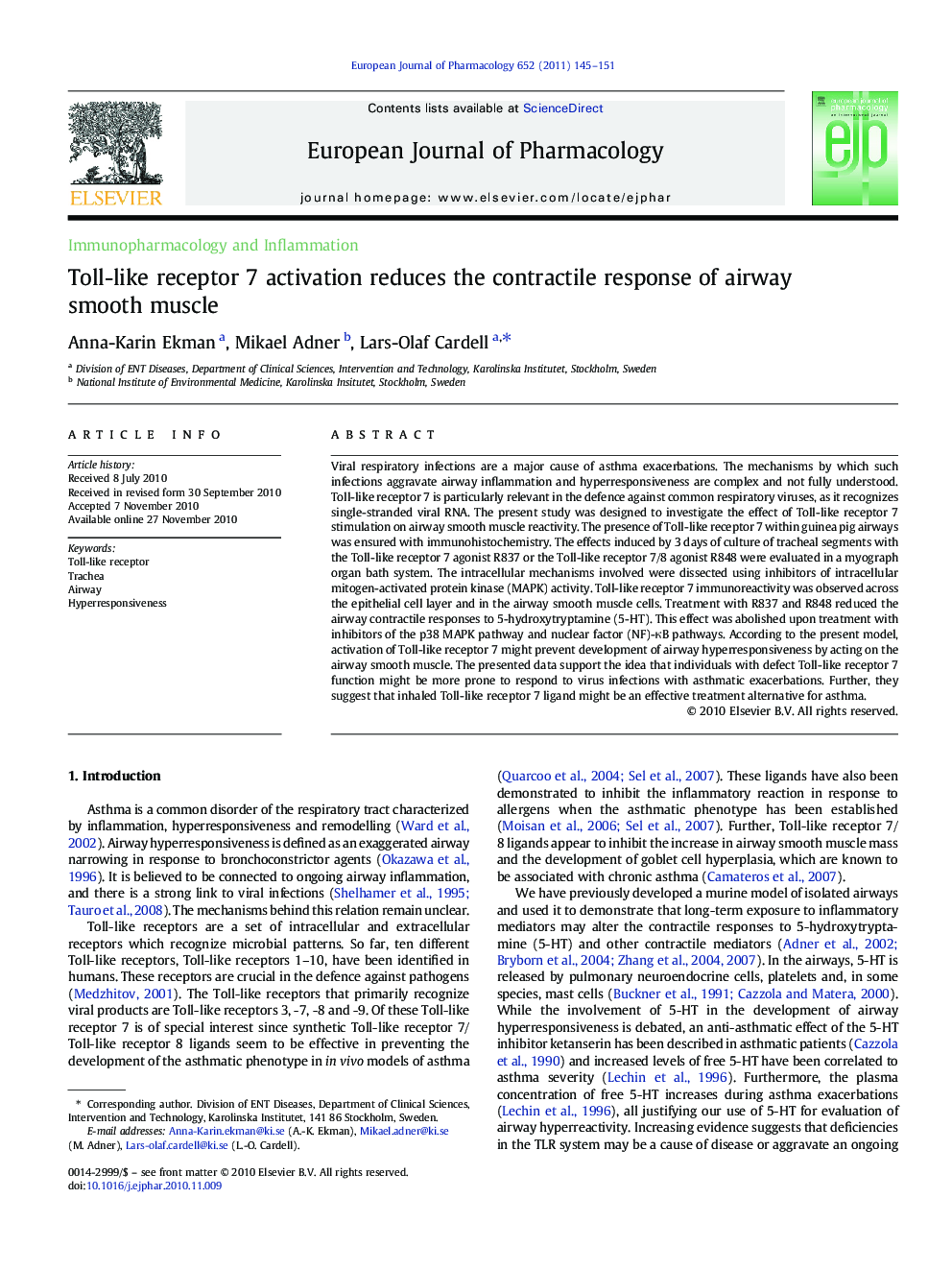| Article ID | Journal | Published Year | Pages | File Type |
|---|---|---|---|---|
| 2533008 | European Journal of Pharmacology | 2011 | 7 Pages |
Viral respiratory infections are a major cause of asthma exacerbations. The mechanisms by which such infections aggravate airway inflammation and hyperresponsiveness are complex and not fully understood. Toll-like receptor 7 is particularly relevant in the defence against common respiratory viruses, as it recognizes single-stranded viral RNA. The present study was designed to investigate the effect of Toll-like receptor 7 stimulation on airway smooth muscle reactivity. The presence of Toll-like receptor 7 within guinea pig airways was ensured with immunohistochemistry. The effects induced by 3 days of culture of tracheal segments with the Toll-like receptor 7 agonist R837 or the Toll-like receptor 7/8 agonist R848 were evaluated in a myograph organ bath system. The intracellular mechanisms involved were dissected using inhibitors of intracellular mitogen-activated protein kinase (MAPK) activity. Toll-like receptor 7 immunoreactivity was observed across the epithelial cell layer and in the airway smooth muscle cells. Treatment with R837 and R848 reduced the airway contractile responses to 5-hydroxytryptamine (5-HT). This effect was abolished upon treatment with inhibitors of the p38 MAPK pathway and nuclear factor (NF)-κB pathways. According to the present model, activation of Toll-like receptor 7 might prevent development of airway hyperresponsiveness by acting on the airway smooth muscle. The presented data support the idea that individuals with defect Toll-like receptor 7 function might be more prone to respond to virus infections with asthmatic exacerbations. Further, they suggest that inhaled Toll-like receptor 7 ligand might be an effective treatment alternative for asthma.
